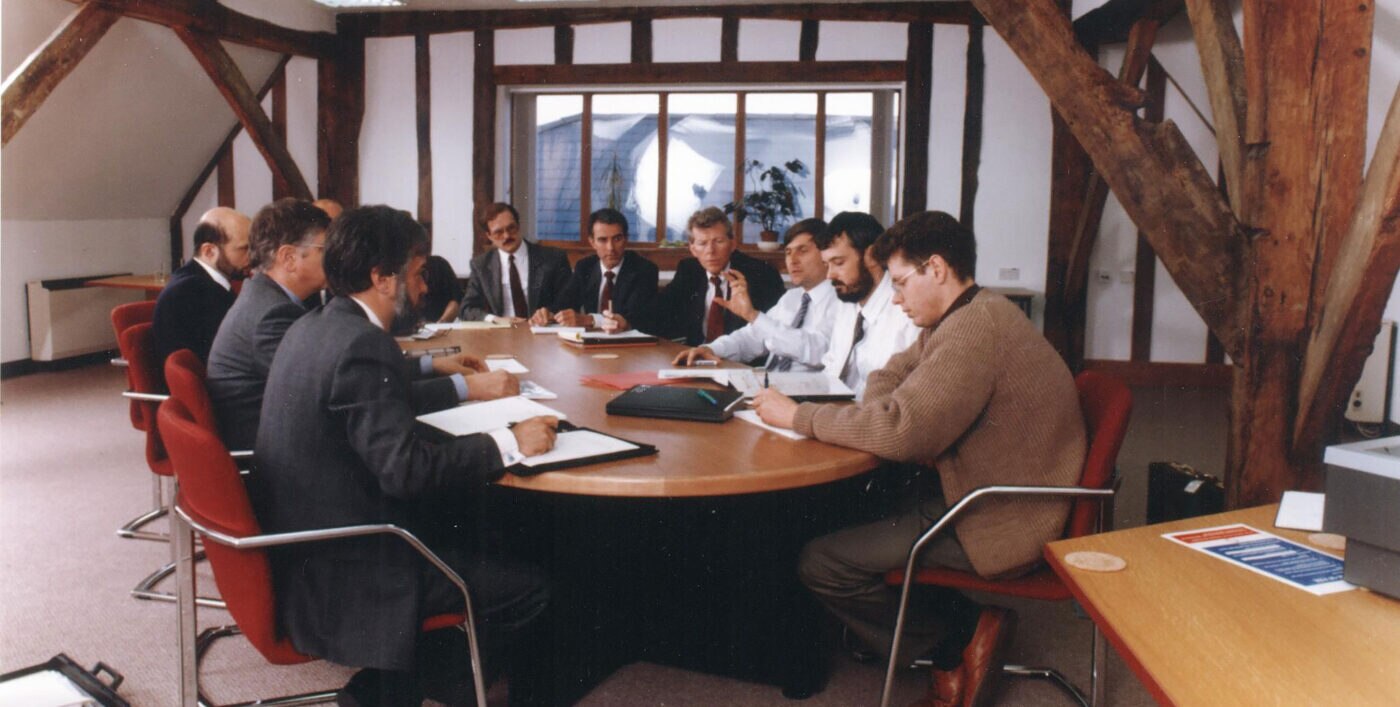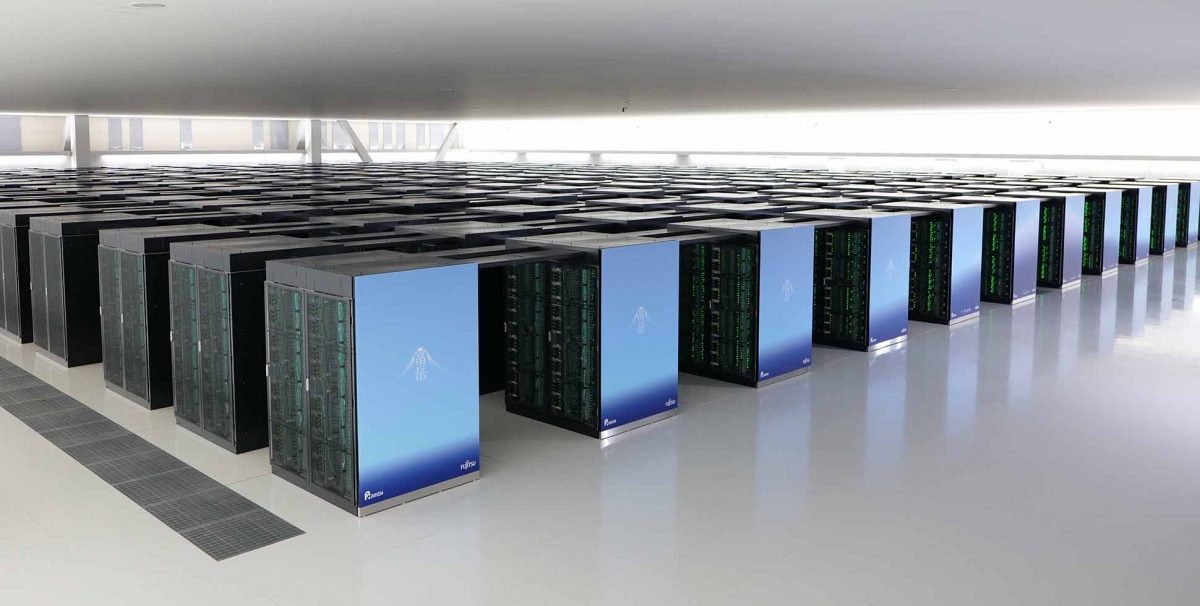Arm at 30: A Story of Patience, Focus and Vision

The march of technology can be unforgiving. Circumstance or inflexibility can turn an emerging company into a struggling one, and these days the barriers to success are enormous.
I think about this as Arm celebrates 30 years of innovation. What was it that enabled a small team of engineers working out of an old Cambridge turkey barn to create a business that thrives 30 years on, now employs more than 6,800 people around the world and is considered a vital contributor to the global technology ecosystem?
We’d like to say we predicted everything—but in technology, it never works that way. We started small and focused on delivering microprocessor technology in a new and compelling way, focusing on power efficiency and building a unique business model that empowered our partners to focus on their core values.
This partnership approach was key to our model of shared success: we only made money if our partners made money. Over time, we expanded into adjacencies with a core principle in mind: deliver new products that make design easier across multiple applications, from mobile to automotive to embedded.
Patience, focus and vision
As Arm grew, we constantly challenged ourselves. In retrospect, I think three things were key to our early success: Patience, focus and vision. We were fortunate that our initial focus came at a time when mobile technology was in its infancy, and partners were looking for a solution that provided the delicate balance between performance, power consumption and code memory footprint.
For example, our mobile phone partners of the mid-1990s had to contend with expensive memory and needed to balance long battery life with enough compute performance to drive the phone’s hardware and software. The ARM7TDMI microprocessor provided that balance and helped to ease the memory-cost issue, too.
As business took off, we continued to develop our microprocessor roadmap and find new application areas for the same designs. Eventually, we started to look beyond the processor (CPU). Mobile phones were starting to enable more sophisticated graphics, and so—with the acquisition of Falanx Microsystems in 2006—the Mali graphics processor (GPU) roadmap was born. Refusing to rest on our laurels, we listened intently to our partners and began looking outward with a focus on how to enable the new workloads that they required.
Taking the long view

High-performance computing (HPC) was one such area. Arm Research began exploring how to bring Arm’s energy-efficient processing capabilities to the HPC space more than 10 years ago. At the time, the space was dominated by legacy silicon designed for big data centers with ample energy sources.
But over time, as power generation expansion slowed, efficiency became almost as important to data center designers as it had become for mobile handset providers. We saw an opportunity to take our experience in mobile processor design and apply it to this market segment.
A decade later, after extensive silicon optimization and nurturing a software development ecosystem, Arm-based silicon powers some of the world’s most energy-efficient HPC machines—including Fugaku, the world’s fastest supercomputer. Arm continues to notch design wins throughout the HPC segment as power-efficient, workload-optimized compute becomes paramount for partners. Success did not come overnight yet that patience, focus and vision paid off.
Another long-term development project emerged 10 years ago through our engineers’ work on triple modular redundancy, a critical silicon capability for safety-critical applications like in automotive and aerospace. Pre-competitive work with the ecosystem yielded a win with the European Commission’s Horizon 2020 program, one of Europe’s largest-ever R&D programs between 2014 and 2020 covering space technology and applications. After years of careful development work, Boeing in 2019 licensed Arm-based technology for commercial design.
Home-grown innovation
Arm’s research group is exploring problems from what’s next in the Arm architecture to implications of new transistor types on Arm, distributed and secure systems to machine learning and security. One key area of focus lies in how we can help to evolve future silicon and system design, given the fact that silicon scaling by traditional methods is slowing. We’re exploring ‘compute at the extremes’ to push silicon limits through disruptive circuits and systems innovation. This includes targeting manufacturable new materials as we proliferate Arm compute in a ‘beyond-silicon’ landscape.
In this spirit, we’ve devoted considerable efforts to redefining the hardware and software stacks to make design faster and more efficient as we scale the Internet of things (IoT). Here, research threads include better hardware-software codesign methodologies, function-as-a-service (FaaS) across heterogeneous network systems and next-generation memory translation for larger, disaggregated systems.
No compromise on security
Additionally, Arm has been unrelenting in its work around security, pushing the industry and our partners to think holistically about principled, end-to-end security for products and solutions. Our research teams are pushing boundaries here, too, by exploring the confidential compute stack and working with academia to systematically define and prove security properties for target architectures and software.
Our vision doesn’t stop at internal development either. Recent novel non-volatile memory work, conducted by Arm Research and Arm’s Physical Design Group, was spun off as an independent company (with Arm retaining a small stake) to give innovators more flexibility and the ability to operate as a startup. The new company, Cerfe Labs, is exploring new non-volatile memory types—called correlated electron materials RAM (CeRAM)—and their potential applications, as well as building on work in ferroelectric FETs.
A strong year for Arm
This spirit of innovation is one reason Arm has enjoyed robust growth this year and partners continue laying the groundwork for future innovation with Arm technologies. In our recent second quarter, Arm partners signed a record 55 licenses—the most in a single quarter—including a record 15 for technology still in development. This included 25 new customers taking first-time licenses: another record for a single quarter. Our year-old, ground-breaking licensing model Arm Flexible Access saw 48 new agreements signed.
In the coming years, that same spirit of patience, focus and vision that made Arm what it is today will propel the Arm ecosystem ahead in exciting new ways. The road ahead, dotted with significant challenges from silicon and software to the system level, may at times seem impossible to navigate. But to paraphrase Lewis Carroll, “It’s only impossible if you believe it is.”
Learn more about Arm past, present and future
To learn more about how Arm is celebrating its 30th anniversary, visit the Arm Company page for photos, facts and figures and more.
Any re-use permitted for informational and non-commercial or personal use only.












